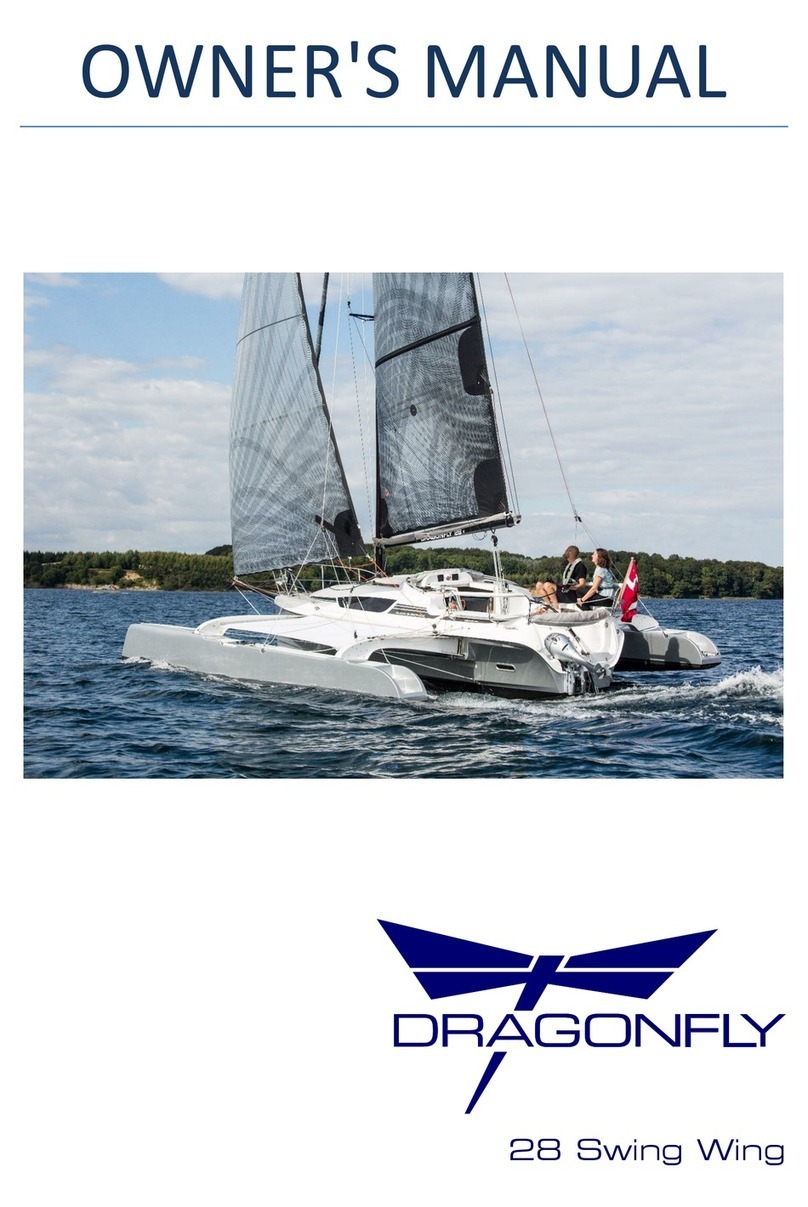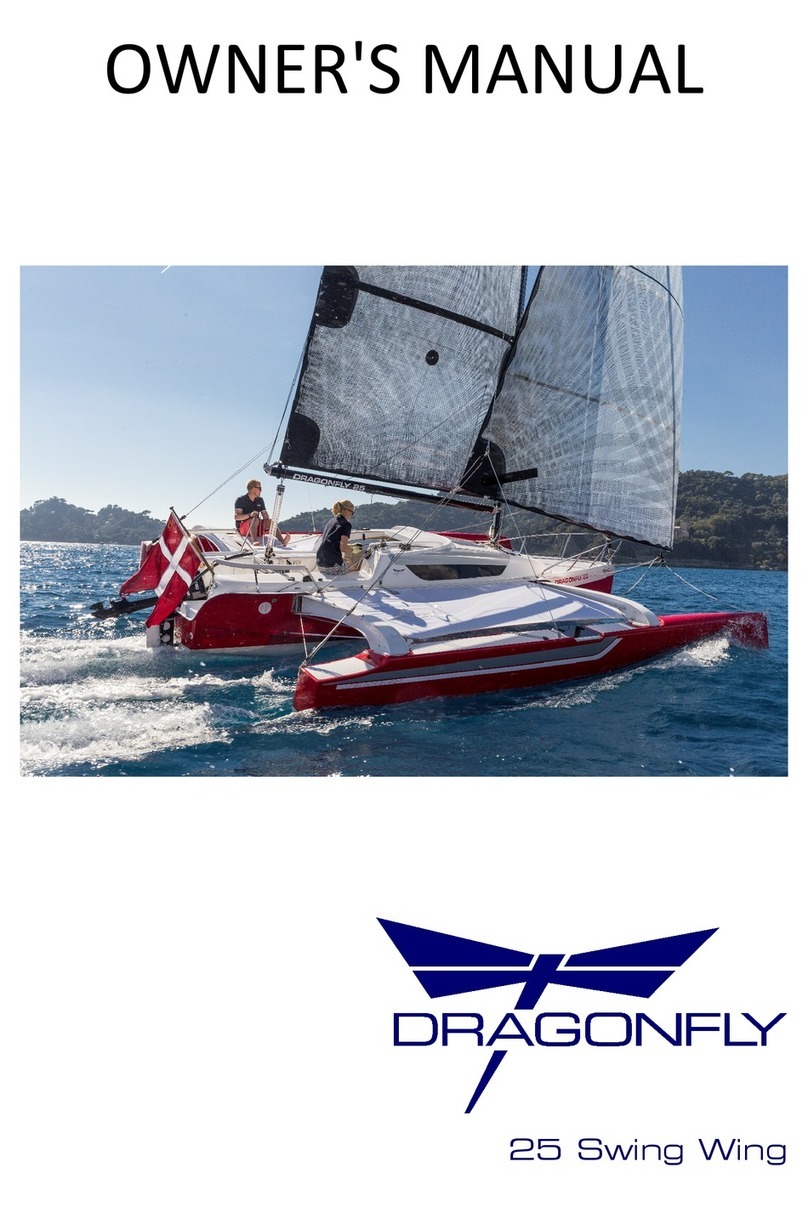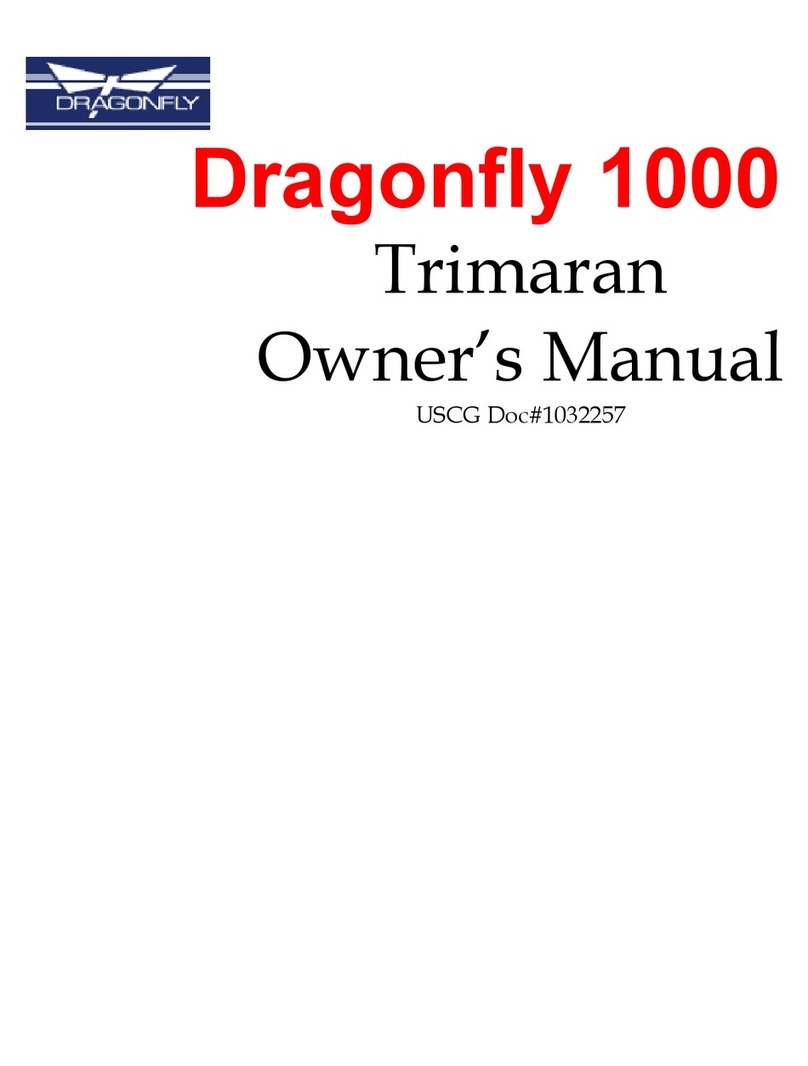
Information before you go sailing
•Check the weather forecast.
•Check drinking water for crew.
•Check fuel tank level.
•Check the power on your batteries are adequate . ( 12V optional )
•Check engine oil on the engine.
•When starting up the engine, check and make sure that cooling water is coming out.
If not, stop the engine and service it.
•Check that both pumps are working, the installed one and the handheld pump.
•Make sure that all equipment is stowed correctly and has been secured safely.
•Check that water stays and rigging are intact.
•Check that ALL hatches are closed – especially on the floats.
•Check that there are life jackets for every crewmember on board.
•If the boat is new, please note that electronics are not calibrated when the boat
leaves the yard.
IMPORTANT NOTICE
Beware of the following:
•Make sure that there always are lifejackets and/or life preservers on board for the
whole crew – and use them!
•Always as minimum we strongly recommend to use lifebelts outside the cockpit when
sailing or even motoring at night.
•High tension/voltage cables. Mast height above sea level is approx. 14 metres/45 feet
– with no antennas. Also when trailering or moving the boat with mast up on the
trailer.
•For long offshore crossings we recommend carrying a life raft in case of fire.
•For long distance offshore sailing we recommend in main cabin a watertight flash
light and a bigger type knife to cut lines.
•Take notice that the boat is not standard equipped with a Compass for navigation
•Also make/prepare a watertight bag with a bit of food, handheld VHF and necessary
flayers in case of a capsize.
•In case of capsize and you are inside the boat, only dive out if you have a knife with
you to cut lines if you get caught in lines.
•By long distance sailing, make sure that all on board are aware of the above-
mentioned procedures.
•For long distance sailing, make sure to have up-to-date flayers and other safety
devices, like Epirp etc.
•We can only strongly recommend storing flares, knife, flash light,
Epirp/mobile/handheld VHF, a bit of water, in the emergency compartment, which is
accessible in capsized position on the SB side main hull outside just behind the aft
crossbeam (when capsized port side) rear/aft crossbeam.































